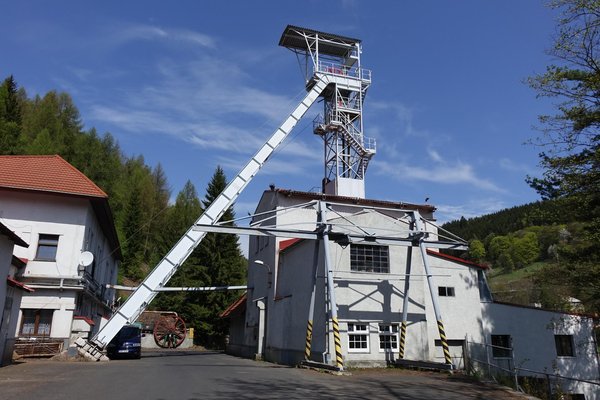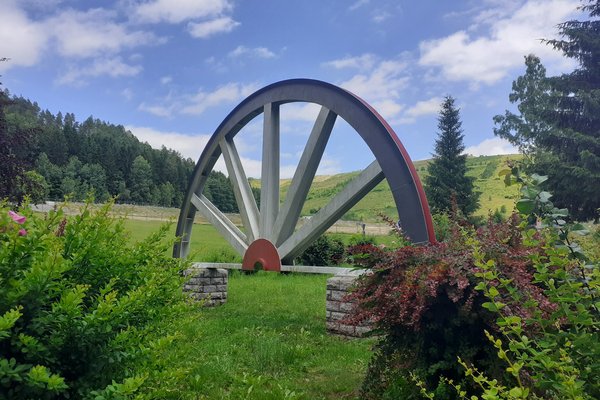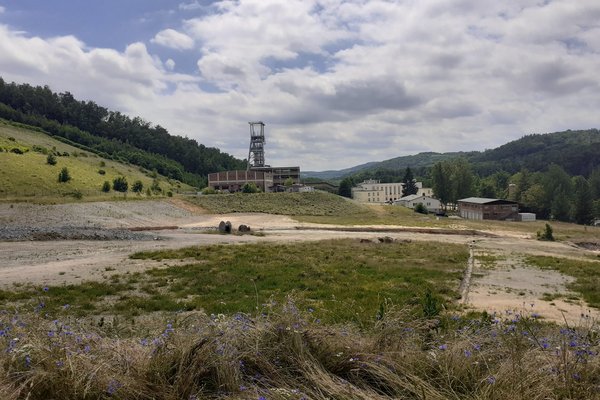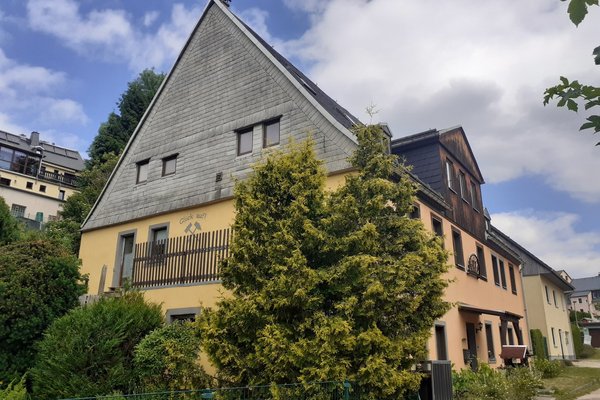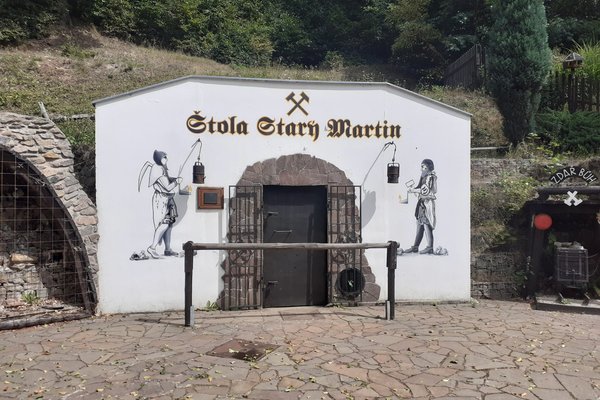Czechia, Germany
Mining Cultural Landscape Erzgebirge
Erzgebirge / Krušnohoří Mining Region comprises a mining landscape that has been used from the Middle Ages onwards.
These Saxon-Bohemian Ore Mountains were mined over centuries for the metals silver, tin, zinc, cobalt, nickel, copper and lead; but anthracite and uranium were also extracted into the 20th century. They have produced technological and scientific innovations, such as the introduction of early modern monetary systems and the founding of the first mining high school. Its miners spread their knowledge across the world by means of emigration.
Community Perspective: This site is hard to grasp, as there are so many elements. You need to see a few of them, which is much easier when you have a car. Overall, the ones in Czechia seem to be the most authentic: Jachymov and the traces of tin mining in Abretamy-Horní Blatná-Boží Dar are recommended among others. Mohboh made it to the uranium ore plant Red Tower of Death.
Site Info
Official Information
- Full Name
- Mining Cultural Landscape Erzgebirge/Krusnohori (ID: 1478)
- Status
-
Inscribed 2019
Site history
History of Mining Cultural Landscape Erzgebirge
- 2019: Inscribed
- Inscribed
- 2016: Requested by State Party to not be examined
- 2015: Postponed
- "At the request of both States Parties, the examination of this nomination is postponed to the following cycle of evaluation"
- 2012: Revision
- Has been on Tentative List of Germany as "Ore Mountains: mining and cultural landscape" since 1999 and as Karl-Liebknecht-Schacht in Lugau/Oelsnitz and Freiberg on the GDR T List of 1989
- Type
- Cultural
- Criteria
- ii
- iii
- iv
Links
- UNESCO
- whc.unesco.org
- Official
-
- montanregion-erzgebirge.de — Montanregion Erzgebirge
All Links
UNESCO.org
- whc.unesco.org — whc.unesco.org/
Official Website
- montanregion-erzgebirge.de — Montanregion Erzgebirge
Community Information
- Community Category
- Cultural Landscape: Relict
Travel Information
Serial Transnational Sites
Prague Hotspot
Recent Connections
-
Tin mining
"After silver, tin was historically the…
-
Nuclear power
For the uranium mining at Jachymov and … -
Postponed sites
2015, "At the request of both States Pa…
Connections of Mining Cultural Landscape Erzgebirge
- Geography
- Trivia
-
-
Underground Boundaries
Beyond the boundaries of the inscribed surface areas there are numerous underground elements some of which are not even included in the surface buffer zone. See (link) which show dotted lines for "Nominated property underground" extending way beyond any inscribed overground zone. E.g the entire element of Dippoldiswalde Mediaeval Silver Mine (1-DE) and the Freiberg location (4-DE). The Nomination file states - "On the Saxon side, in some cases, for linear elements a standardised buffer zone between 5 and 10 meters in width was determined. Structures located underground were only allocated with a buffer zone when these are reflected by function-specific installations or archaeological remains above ground. Otherwise, above ground (construction) measures will have no effect on these mostly very deep-lying structures."See whc.unesco.org
-
- History
-
-
Thirty Years' War
the Saigerhütte Grünthal in Olbernhau was raided by Swedish troops
-
- Architecture
-
-
Ideal City
Marienberg
-
- World Heritage Process
-
-
Industrial Landscapes
-
Serial Transnational Sites
2 countries -
Postponed sites
2015, "At the request of both States Parties"
-
- Human Activity
-
-
Tin mining
"After silver, tin was historically the second most important metal that was mined and processed in the Ore Mountains." (AB ev)
-
Mints
Olbernhau, Jachymov -
Copper production
-
Silver production
-
Nuclear power
For the uranium mining at Jachymov and the 'Red Tower of Death' -
Uranium Mining
Jachymov
-
- Constructions
-
-
Pumping Stations
Numerous examples of pumping equipment e.g "In Joseph Schacht, at the level of the Adam Stolln (adit), two cast-iron water-column engines (built 1833/1863), represent a remarkable survival of pumping equipment that is relatively complete and in its original location. These are set in an architecturally fine, and visually impressive, masonry engine chamber and balance chamber." (Nom File)
-
- Timeline
-
-
Built in the 12th century
shaped by 800 years of almost continuous polymetallic mining, from the 12th to 20th centuries (AB ev)
-
- WHS Hotspots
-
-
Prague Hotspot
The Red Tower of Death in Ostrov is 2h30m by bus (Can be combined with Karlovy Vary spa, other components are also doable)
-
- Science and Technology
-
-
Mines which can be visited underground
Hřebečná tin mine (via stairs), and possibly others
-
- WHS Names
-
-
Named after a Mountain
Name of a range of mountains (= "Ore Mountains") in Czechia/GermanySee en.wikipedia.org
-
News
No news.
Recent Visitors
Visitors of Mining Cultural Landscape Erzgebirge
- Adrian
- Adrian Turtschi
- Alexander Barabanov
- Alexander Lehmann
- A. Mehmet Haksever
- Argo
- Assif
- Atila Ege
- Bernard Joseph Esposo Guerrero
- Bill Maurmann
- Bin
- Bropyk
- Carlos Sotelo
- Cezar Grozavu
- Christian Wagner
- christof
- Christoph
- Christravelblog
- Claire Bradshaw
- Clyde
- Csaba Nováczky
- CugelVance
- Daniel Chazad
- Dan Pettigrew
- DavidS
- Dimitar Krastev
- Dolemite92
- Dorejd
- Echwel
- Elia Vettorato
- Els Slots
- erdsaumnaht
- Errol Neo
- Ertai
- Eva Kisgyorgy
- Fan Yibo
- Farinelli
- Feldhase
- Femke Roos
- FK
- FrankW
- FS
- Galgalula
- g.emma_bae
- George Gdanski
- GeorgeIng61
- GerhardM
- Gernot
- Harald T.
- Harry Mitsidis
- heywhatever2
- Hubert
- Iain Jackson
- Ian Cade
- Ingemar Eriksson
- Ivan Rucek
- Jacob Otten
- Jakob F.
- Jakubmarin
- Janina Lehmann
- Janos
- Jan-Willem
- Jan Zimmermann
- Jarek Pokrzywnicki
- Jesse S 2010
- Jezza
- jonas
- Jonas Kremer
- KarenBMoore
- Karito Vies
- Kasper
- Kerékgyártó
- Kurt Lauer
- leroykstlj
- lichia
- Lisu Marian
- Loic Pedras
- Luboang
- Lucio
- Luis Filipe Gaspar
- Maciej Gil
- Martin
- Martina Rúčková
- Matejicek
- MatusBeber
- MaxHeAnouBen
- MaYumin
- Michaela0705
- Mikko
- Miloš Tašković
- Mohboh
- MoPython
- Mstrebl1990
- nan
- Nasebaer
- Nihal Ege
- NoahFranc
- Patrik
- Peter Lööv
- Petteri
- Philipp Leu
- Philipp Peterer
- Piotr Wasil
- Rafał Kałczuga
- Ralf Regele
- Randi Thomsen
- Rick Ohm
- rivr
- Roger Ourset
- Roman Bruehwiler
- Roman Raab
- Ronbon
- Rudegirl
- Sabrina Liebehentschel
- Sandmann15
- serghei.belous
- SirLoydd
- Solivagant
- Stanislaw Warwas
- Stijn
- Svein Elias
- Szucs Tamas
- Tamara Ratz
- Taotao Chen
- Tarquinio_Superbo
- Thomas Buechler
- Thomas van der Walt
- Thorben
- Timonator
- Tommy W
- tony0001
- triath
- Tsunami
- usagi1974
- Valentina
- VB73
- Veronica
- Vincent Cheung
- VLabhard
- WalGra
- Walter
- Wojciech Fedoruk
- Xiquinho Silva
- YaroMir
- Yevhen Ivanovych
- Zoë Sheng
Community Reviews
Show full reviews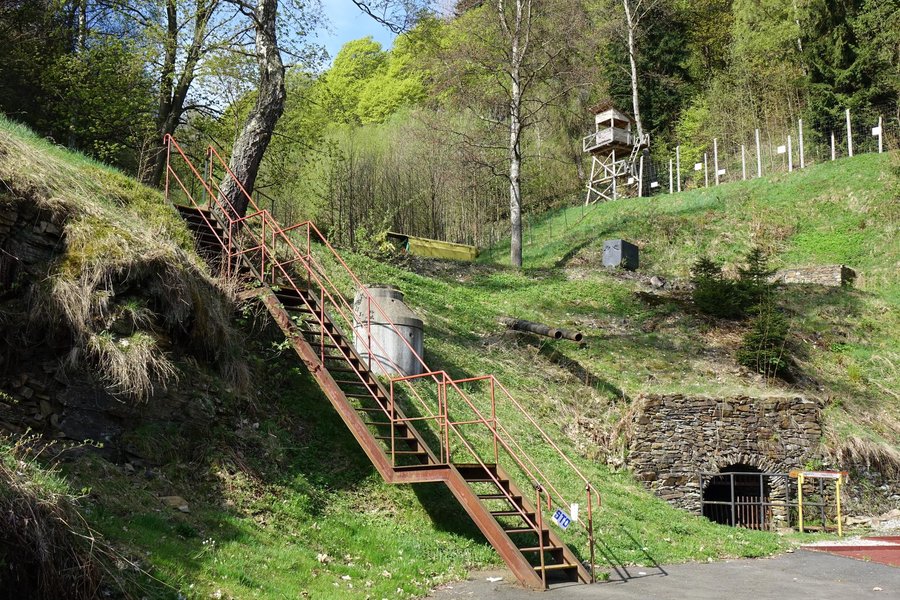
The red Tower of Death
I visited the Red Tower of Death on my way back from Karlovy Vary to Prague. I don't recall ever visiting a similarly ugly VHS. The tower is located near the prison and the structure itself has no aesthetic value at all.
The tower is a simple seven-story brick structure. In the 1950s it was used as a sorting plant for uranium ore to be exported to the Soviet Union. The tower was part of a labour camp for political prisoners. The prisoners, mostly opponents of the communist regime, clergymen and airmen who served in the RAF in World War II, had to transport uranium ore to the seventh floor, where the ore was poured down through a system of sieves. From the description it is probably obvious why the tower is called the Tower of Death. The workers were exposed to radiation that was rapidly destroying their health. However, deaths on the death tower itself were rather rare. Sick prisoners were usually transferred to other prisons.
Only the rough structure of the tower remains, with a small exhibition inside commemorating the fate of the prisoners. Visits are only possible with a guide. Visiting is only possible on weekends during the summer holidays (July, August). Do not expect crowds of tourists.
Keep reading 0 comments
My review is only on the Red Tower of Death and mirrors Walter’s visit, although he got closer. I only got as close as the fence at the back of the industrial park for a view. The site itself is closed however I do have some information if you want to visit. There is a standard brown tourist sign on the highway identifying the site. You turn after the industrial park. The site was closed for me and you cannot see the tower from the entrance due to the height of the fence. A sign on the door says the it will open after June 1 2023 but only on Saturday and Sunday for tours at 10am and 1pm. Tours are required but are free. Personally, I wouldn’t go into that dusty uranium scented tower but I would have liked to have at least approached the building.
Keep reading 0 comments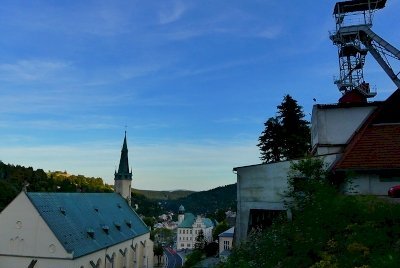
I visited this WHS in Summer 2019 en route from Zatec to Augsburg, Germany. I focused mainly on the Czech side even though I drove through other minor sites on the German side too.
Coming from Zatec, you can't but notice the huge power plant (which is quite of an eyesore!) before getting to Jachymov. Like the rest of Northwestern Czechia, Jachymov has definitely seen better days even though the inscribed sites are quite in good condition with several information boards in English too. The view from the winding road leading to Jachymov is that of an old mining town like many others on the list.
The most interesting site in Jachymov is the Dul Svornost mine which has been operating since 1530 and is one of the oldest complexes in Europe. It is also the last functioning mine in the Jachymov region. Originally, the mine produced silver, cobalt, arsenic and bismuth. In the 19th and 20th centuries, it was a source of radium ores and uranium, hence the peculiar monument of Jachymov just before entering the town. Since 1964 the mine has been used to provide therapeutic radon water (which is believed to be up to 13,000 years old!) for the Jachymov spa. For those that are more keen on industrial heritage sites, there are several trails along what is known as the Stribirna Stezka/Silberstrasse.
Keep reading 0 comments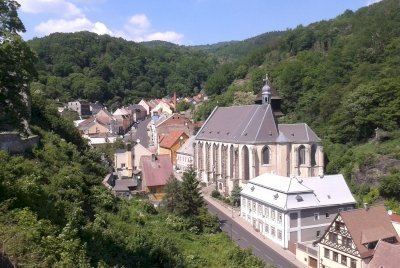
From the TWHS “Ore Mountains mining landscape” that has a great chance to be inscribed on the list this year, I visited historical center of Freiberg on the German side, and all five sites nominated by Czechia: (i) Jáchymov mining landscape, (ii) Abertamy – Horní Blatná – Boží Dar mining landscape, (iii) Krupka mining landscape, (iv) Měděnec (Měďník) mining landscape, and I saw (v) Red Tower of Death from distance of few hundreds meters going by bus from Jáchymov towards Ostrov and Karlovy Vary.
Despite a slight over-representation of mines on the list, I have to admit that the phenomenon of mining played a key role in the development, economy, and also scientific research of Central Europe. It resulted in knowledge and wealth that were eventually distributed worldwide. Among the mining WHSs that I visited (Goslar-Rammelsberg in German Harz Mountains; Banská Šťavnica in Slovak Ore Mountains; and Kutná Hora mining town in Czechia), the Erzgebirge/Krušnohoří landscape is kind of exceptional because of its enormous size and large diversity in terms of typology, landscape, nature, architecture and also of materials (silver, tin, cobalt, copper, iron ore, coal, uranium and other elements such as molybdenum, tungsten, lithium, radium, radon, etc.)
My impression from the visited sites:
(A) Germany – the majority of nominated sites are located there, but I visited only town of Frieberg (I traveled from Dresden by train). It happened two times and in both cases it was during Christmas, and I enjoyed the Christmas Market there …
Keep reading 0 comments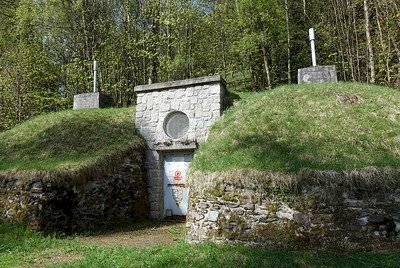
In the east of Germany and just across the border in the northwest of Czechia lies a region called the Ore Mountains (Erzgebirge/Krušnohoří in the respective local languages). Its name comes from the ores (silver, copper, tin, zinc) that have been mined here over the centuries. The Germans and Czechs have been active since 2015 to secure a shared spot for this area on the World Heritage List.
On the German side, I checked out 3 locations in the Marienberg Mining Area: the city center of Marienberg, a reconstructed horse-driven mill in the Lauta Mining Landscape, and the Grünthal Liquation Hut Complex in Olbernhau. Marienberg’s distinguishing feature is its large city square, designed in the style of the Italian Renaissance. I noticed little of further interest in the city centre, but I did pay a visit to the regional museum which is housed in a massive former granary from the early 19th century. The employees on duty seemed a bit shocked that I wanted to visit. The exhibition unfortunately mainly focuses on the traditional crafts and daily life in the region, not so much on the mining.
I can be brief about the second location on my list: the Pferdegöpel auf dem Rudolphschacht (Lauta) cannot be visited without a tour, and I had to wait another hour for one to start. So I drove straight on to the last location: Grünthal in Olbernhau. This immediately felt a lot better: a fast-flowing river runs through the valley (always handy …
Keep reading 0 comments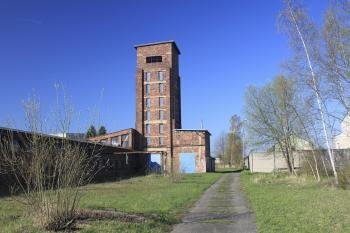
Erzgebirge / Krušnohoří Mining Cultural Landscape was originally planned for nomination in 2016. I decided to visit this TL site ahead of its official inscription, in april 2016. This nomination was withdrawn a few weeks later, due to the ICOMOS evaluation, pointing, as I understood, a lack of coherence between the individual components.
It is true that this project is difficult to apprehend. On the German side, there is 8 areas, with 39 elements and more than 110 sites (some sites including up to 11 significant objects). The Czech side consists of 4 cultural lanscapes, one lime work and the Red Tower of Death.
The nomination dossier avaiblable on the WHC site does not show clear maps of the different elements, sites or significant objects, and I spent considerable amount of time researching the internet to correctly locate all objects. I found this site in German (http://www.jenskuglerverlag.de/studien-dokumentationen) which lists some studies with maps of some of the elements.
I must say that I do agree with ICOMOS with the lack of coherence, at least on the German part. It is a patchwork of monuments (some very vaguely) related to the mining history of the area. To note :
- head office of companies working in mining (or in watch making, or cutlery and tableware).
- administrative building of mining companies, far away from the mines.
- professional schools, I imagine in which engineers were trained for mining.
- churches and cathedral where miners could attend service.
- castle or historic …
Keep reading 0 comments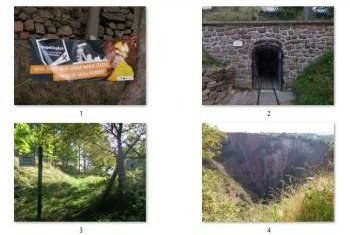
I visited several towns around Dresden recently, and Altenberg was one of them. It is in a mountainous area close to the border with Czechia and is known for cross country skiing among Germans.
Altenberg is also one of the mining towns collectively nominated by Germany for a WHS. It sounds like it is for sure to become a WHS within a few years.
I visited on a morning trip on a Sunday by train from Dresden.
Both the tourist office and the mining museum were open on the Sunday morning.
So I visited the museum by one of the entrances to the tin mine and then went to see what they call "Pinge," a huge hole that was created when the mine collapsed in 1620. The diameter today is about 400 meters, and the depth is about 150 meters.
PHOTO 1: The banner reads, "Wir sind auf dem Weg zum Unesco-Welterbe," which means, "We are on the way to Unesco World Heritage."
PHOTO 2: One of the entrances to the mine.
PHOTO 3: There is a 1200 meter-long fence surrounding "Pinge." The sign reads, "Bereten verboten: Lebensgefahr!" I later found out that it meant, "Entrance forbidden: Fatal!"
PHOTO 4: "Pinge."
As you can see, my German is not very good.
Keep reading 0 comments
